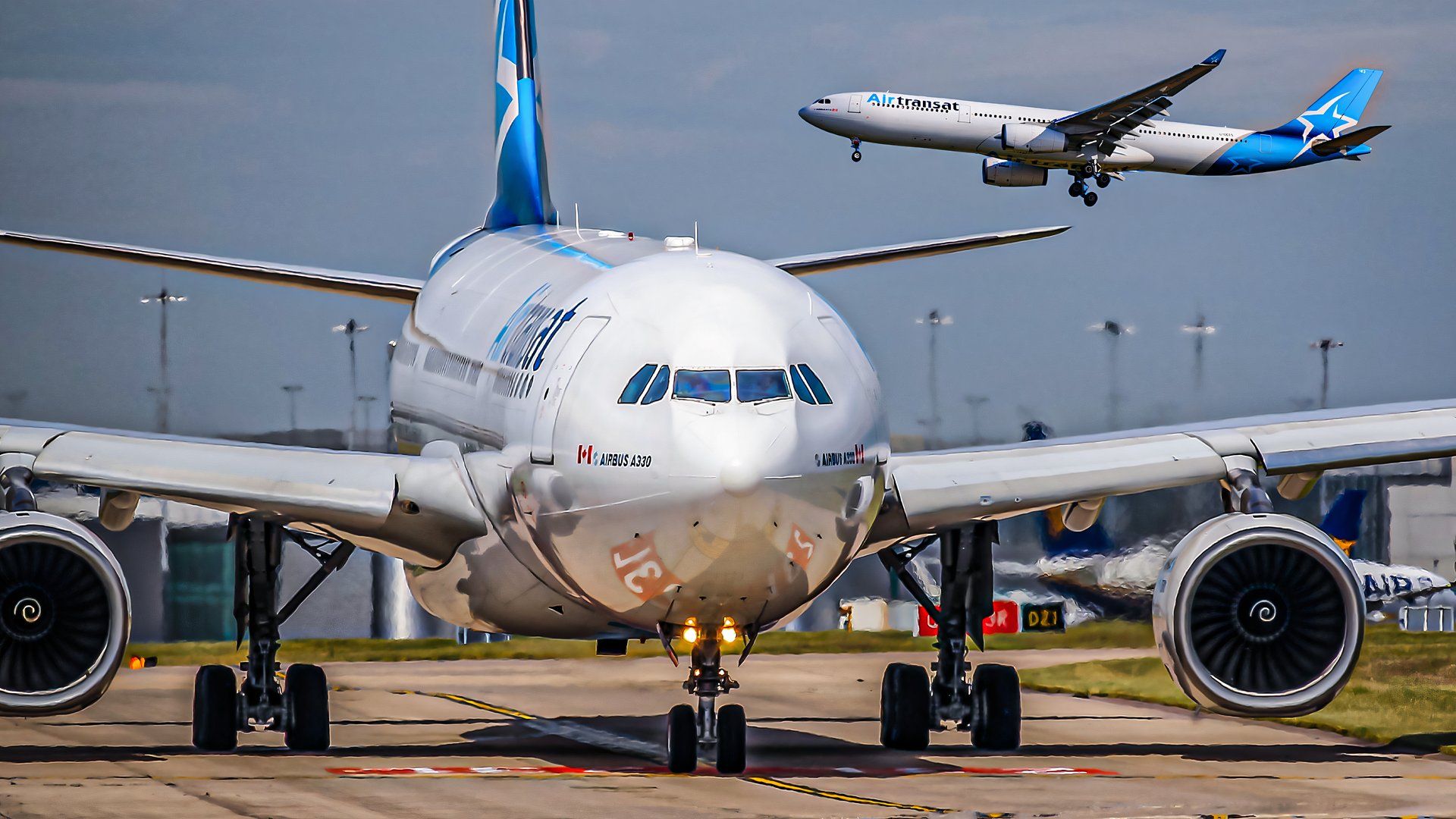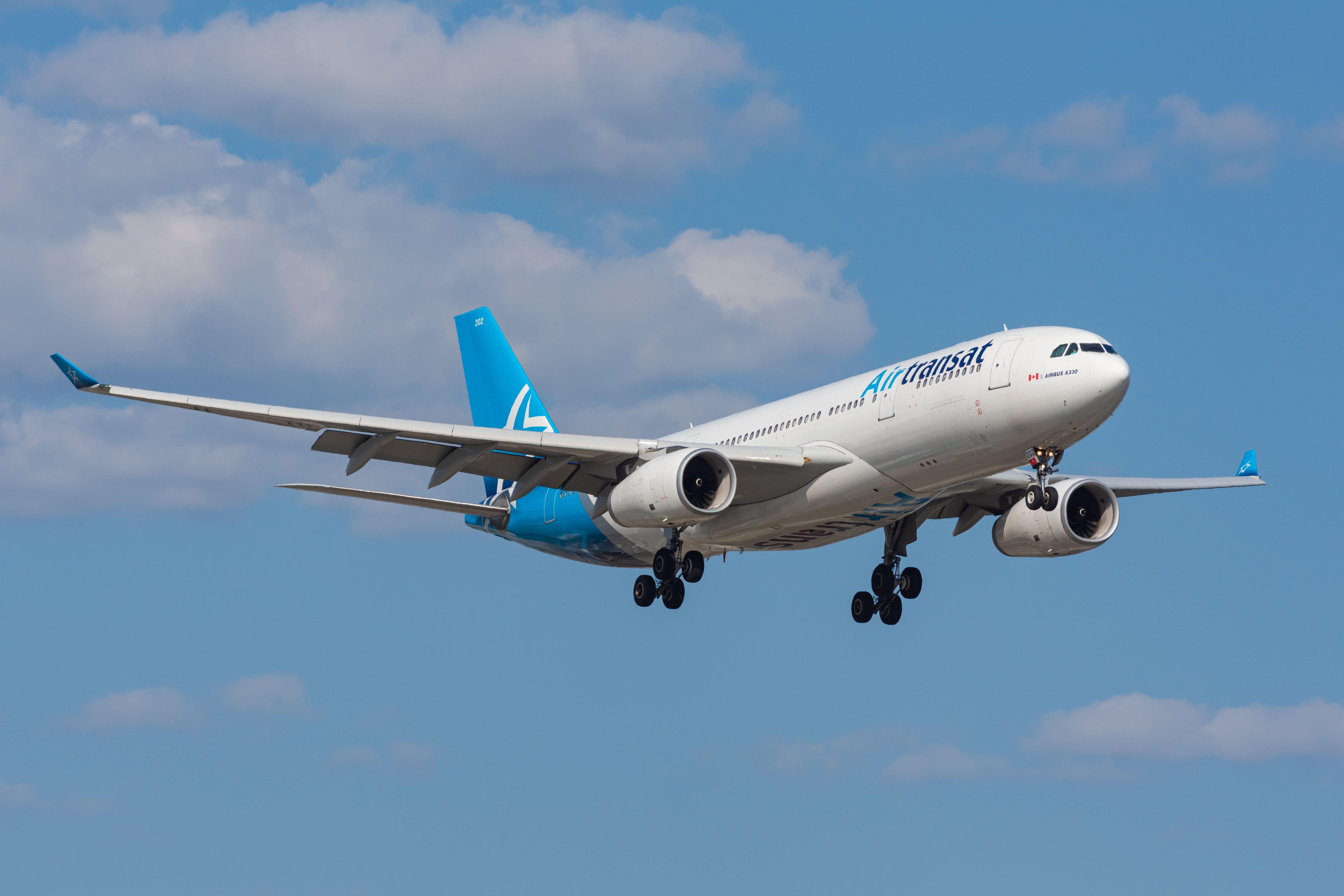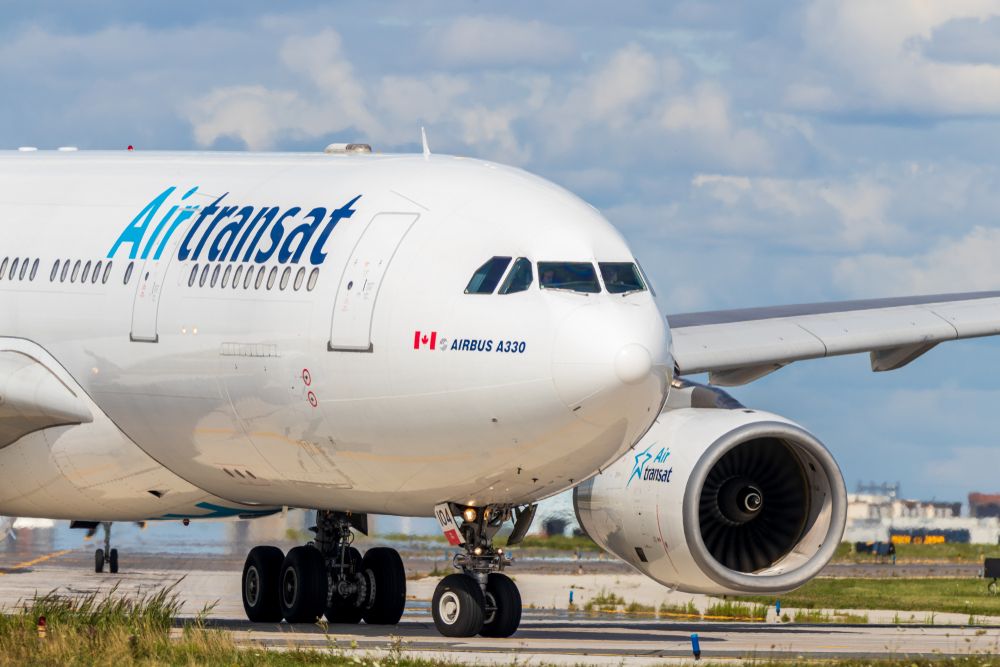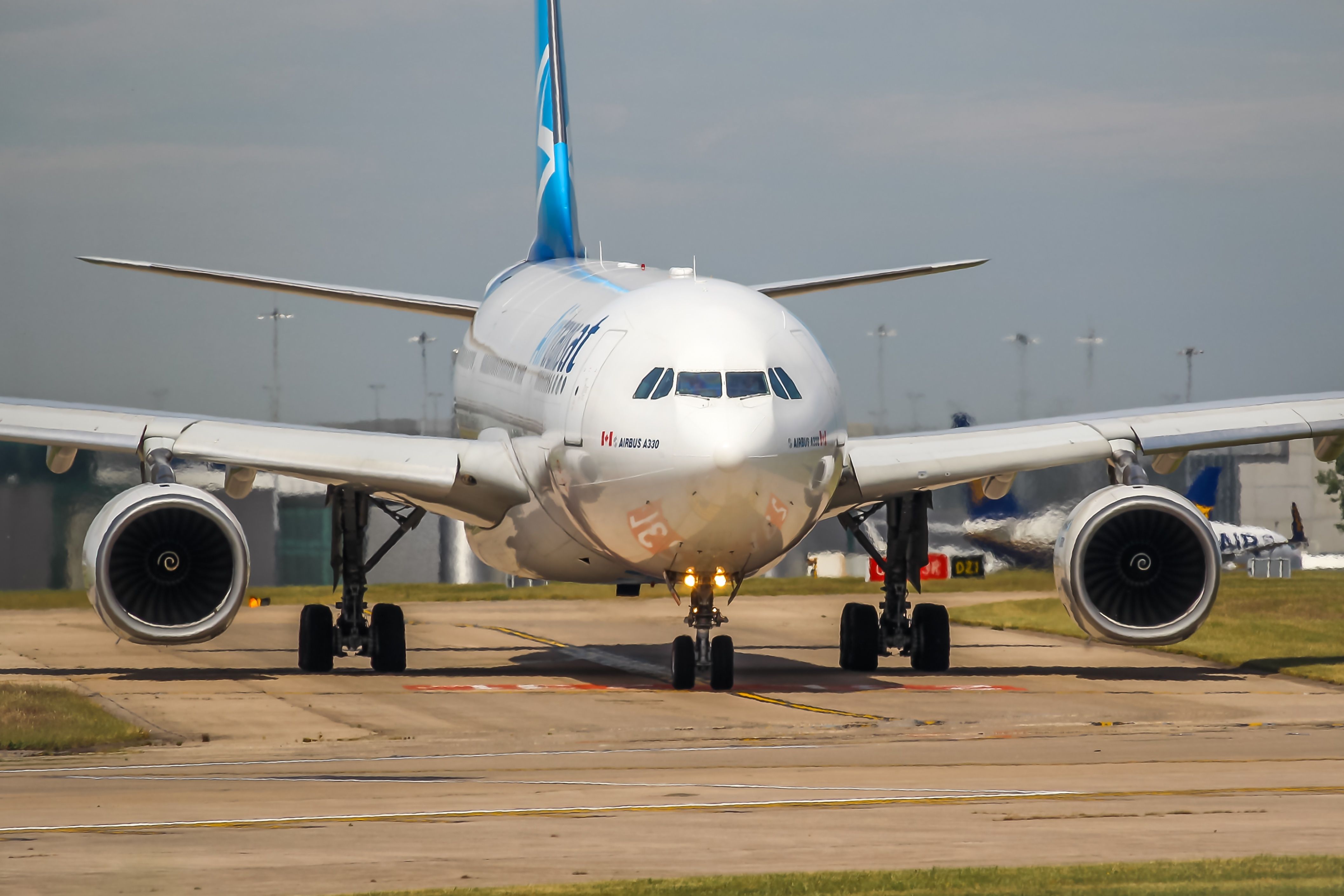Summary
- Airbus A330 plays a crucial role in connecting Canada to European destinations spanning over 4,000 miles.
- Air Transat operates A330-200 and A330-300 variants, well-suited for long-haul travel, mainly to Europe and the Middle East.
- The A330 supports routes like Montreal to Athens (4,619 miles) and Toronto to Porto (3,554 miles), ensuring passenger comfort.
Air Transat, one of Canada’s largest airlines, stands out for connecting North America to a range of long-haul destinations, particularly across the Atlantic. While the airline primarily operates narrowbody aircraft, its Airbus A330 widebody fleet is the backbone for its longest routes.
Covering over 4,000 miles, these routes underscore the aircraft’s role in connecting Canada to international destinations like Europe and beyond. Using data provided by Cirium, an aviation analytics company, the following analysis sheds light on Air Transat’s longest A330-operated routes, illustrating the aircraft’s significant role in long-haul operations.
What other aircraft does Air Transat operate?
The Airbus A330’s role within Air Transat is paramount for bridging long distances efficiently. The airline operates the A330-200 and A330-300 variants, which differ slightly in their range and seating capacity but are highly suited to long-haul travel.
The A330’s range allows Air Transat to connect Canadian travelers to far-off destinations such as Europe, the Caribbean, and the Middle East, with most routes exceeding the 4,000-mile mark. However, the airline also operates a series of other aircraft.
Photo: The Bold Bureau l Shutterstock
This is Air Transat’s fleet, according to Plane Spotters.net
|
Aircraft |
In Service |
C |
Y |
Total |
|---|---|---|---|---|
|
Airbus A321-200 |
8 |
2 |
196 |
198 |
|
Airbus A321LR |
19 |
12 |
187 |
199 |
|
Airbus A321XLR |
3 on order |
TBA |
TBA |
TBA |
|
Airbus A330-200 |
14 |
12 |
288 |
300 |
|
Airbus A330-300 |
2 |
12 |
334 |
346 |
|
Total |
43 |
Montreal to Athens (4,619 miles)
Montreal to Athens is one of Air Transat’s longest routes, spanning 4,619 miles. This service caters primarily to tourists and the Greek expatriate community in Canada, and it operates during the peak summer travel season.
This route is typically operated by the A330-300, which has a higher seating capacity. This ensures that Air Transat can meet the surge in demand during the peak travel season. The A330’s modern cabin design and inflight entertainment systems make the 9-hour journey a pleasant experience for passengers eager to reach their Mediterranean destinations.
Toronto to Athens (4,784 miles)
Another significant route for Air Transat is from Toronto Pearson International Airport (YYZ) to Athens International Airport (ATH), a distance of 4,784 miles. This direct service typically operates seasonally during the peak summer months when demand for leisure travel to Europe is high.
The A330 makes this route possible by offering both the range and capacity needed to manage the large number of passengers flying between Toronto and the Greek capital. The route serves not only Canadian tourists eager to explore Greece’s ancient ruins and islands, but also a sizable Greek diaspora living in Canada. The flight lasts approximately 9.5 hours, making the A330’s spacious cabin and onboard amenities critical in ensuring passenger comfort.
Montreal to Paris (3,438 miles)
While slightly under the 4,000-mile mark, the route from Montreal to Paris Charles de Gaulle Airport (CDG) is one of Air Transat’s most essential long-haul routes. Covering 3,438 miles, this route is operated year-round and is a crucial connection between Quebec’s largest city and France’s capital.
Though shorter than other long-haul routes, this flight remains highly popular due to the large French-speaking population in Quebec and the significant number of tourists traveling between these two cities. The A330’s widebody design, with its spacious seating configuration and modern amenities, ensures that passengers traveling between Montreal and Paris can do so comfortably on this 7-hour flight.
Toronto to Porto (3,554 miles)
Porto, Portugal’s charming northern city, has become a growing destination for Canadian travelers. The route from Toronto to Porto spans 3,554 miles and operates seasonally during the warmer months when tourism to Portugal peaks.
Photo: Bradley Caslin | Shutterstock
Air Transat uses its A330 aircraft to serve this route due to its large passenger capacity and ability to cover the distance efficiently. The A330’s widebody configuration allows for a more comfortable flying experience on this 7-hour transatlantic journey, ensuring that passengers arrive in Porto well-rested and ready to explore.
Toronto to Amsterdam (3,940 miles)
Rounding out the list is the 3,940-mile route from Toronto Pearson International Airport to Amsterdam Schiphol Airport (AMS). Amsterdam is a key European hub, and this route caters to leisure travelers and those connecting to other destinations across Europe and beyond.
Like other long-haul routes, the A330 plays a crucial role in handling the high passenger demand on this route. With spacious seating and advanced fuel efficiency, the A330 ensures that Air Transat can offer a comfortable and reliable service on this nearly 8-hour flight.
The A330’s role in Air Transat long-haul network
As demonstrated by data provided by Cirium, an aviation analytics company, Air Transat relies heavily on the Airbus A330 for its most extended and demanding routes. The aircraft’s long range, seating capacity, and fuel efficiency make it ideal for connecting Canadian cities to destinations across Europe, the Middle East, and beyond.
With a range covering over 7,000 miles, the A330 allows Air Transat to bridge vast distances and maintain a robust network of international routes.
The aircraft’s widebody configuration ensures that passengers enjoy a comfortable experience on these long-haul journeys, complete with modern amenities and inflight entertainment. As Air Transat continues to expand its international offerings, the Airbus A330 will remain a cornerstone of its fleet, ensuring that the airline can continue to meet the growing demand for long-haul leisure travel between Canada and some of the world’s most sought-after destinations.




